-
 bitcoin
bitcoin $114320.977035 USD
-0.40% -
 ethereum
ethereum $4152.439985 USD
-1.75% -
 tether
tether $1.000111 USD
-0.04% -
 xrp
xrp $2.843037 USD
-1.63% -
 bnb
bnb $1013.349380 USD
-1.62% -
 solana
solana $208.362767 USD
-2.10% -
 usd-coin
usd-coin $0.999783 USD
0.00% -
 dogecoin
dogecoin $0.232559 USD
-1.00% -
 tron
tron $0.333491 USD
-1.09% -
 cardano
cardano $0.806310 USD
0.19% -
 hyperliquid
hyperliquid $45.023720 USD
-1.59% -
 ethena-usde
ethena-usde $1.000819 USD
-0.06% -
 chainlink
chainlink $21.241249 USD
-2.11% -
 avalanche
avalanche $30.035416 USD
-0.66% -
 stellar
stellar $0.364984 USD
-2.05%
How do I use Phantom's token creation feature?
Phantom Wallet doesn’t create tokens natively but lets you manage SPL or ERC-20 tokens after deploying them via tools like Solana CLI or Remix IDE.
Sep 28, 2025 at 10:54 am
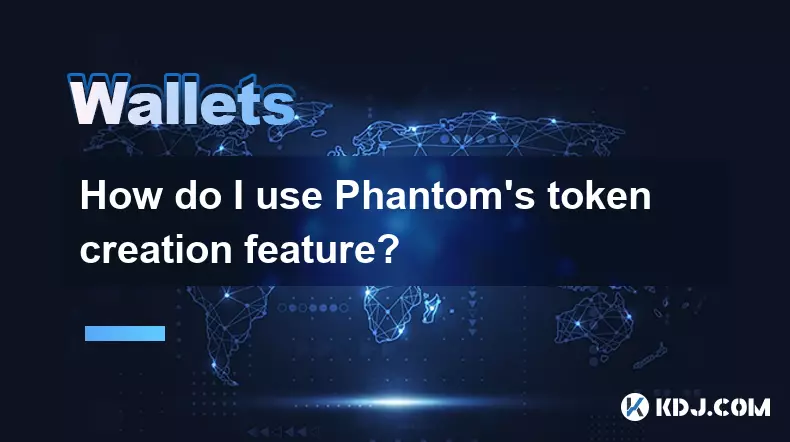
Understanding Phantom Wallet’s Role in Token Creation
1. Phantom wallet does not natively offer a token creation feature within its interface. It is primarily designed as a non-custodial cryptocurrency wallet for Solana and Ethereum blockchains, enabling users to store, send, receive, and interact with tokens and decentralized applications. While it supports SPL tokens on Solana and ERC-20 tokens on Ethereum, the actual process of creating a new token requires external tools and smart contract deployment.
2. To create a token that can be managed through Phantom, developers typically use blockchain development environments such as Solana’s SPL Token Creator or Ethereum-based platforms like Remix IDE, Hardhat, or third-party no-code services such as Metaplex or CoinTool. These platforms allow users to define token parameters including supply, name, symbol, decimals, and minting authority.
3. Once a token is deployed on the Solana or Ethereum network, it can be viewed and managed in Phantom by adding the token’s mint address manually. This makes Phantom a convenient tool for interacting with custom tokens post-deployment, but not for initiating their creation directly.
Steps to Deploy a Token Compatible with Phantom
1. Choose the blockchain—Solana or Ethereum—based on your needs. For Solana, SPL tokens are standard; for Ethereum, ERC-20 is used. Each has different deployment methods and cost structures. Solana generally offers lower transaction fees and faster processing times.
2. Use a development toolkit. On Solana, you can use the Solana CLI or web-based tools like https://www.magiceden.io/token-creator or https://spl-token-creator.vercel.app/. These platforms guide users through setting token metadata and deploying the contract using their connected Phantom wallet for signing transactions.
3. Fund your wallet with enough SOL or ETH to cover deployment fees. The amount required varies depending on network activity but usually ranges from 0.01 to 0.05 SOL on Solana. Ethereum fees may be significantly higher during peak congestion.
4. After deployment, copy the token’s mint address. Open Phantom, navigate to the Solana or Ethereum section, click “Add Token,” and paste the mint address. The balance will appear if the token was successfully created and linked to your wallet.
5. Manage minting and distribution rights carefully. By default, most token creators assign minting authority to the deploying wallet (your Phantom wallet). You can later revoke this authority to make the token non-mintable, ensuring total supply remains fixed.
Security Considerations When Creating Tokens
1. Never share your seed phrase with any token creation platform. Legitimate tools will only request connection to your Phantom wallet and require signature approval for transactions. Any site asking for your recovery phrase is fraudulent.
2. Verify the legitimacy of third-party token creation tools. Use well-known platforms with open-source code and community trust. Check GitHub repositories, official documentation, and user reviews before proceeding.
3. Test on devnet or testnet first. Most deployment tools support test environments where you can simulate token creation without spending real funds. This allows debugging and verification before mainnet deployment.
4. Double-check all token parameters before confirming deployment. Name, symbol, supply, and decimals cannot be changed after launch. Mistakes in these fields can lead to irreversible issues, including incorrect balances or confusion among users.
5. Be aware of scams involving fake tokens. Malicious actors often deploy counterfeit versions of popular tokens with similar symbols. Always verify mint addresses through official channels when distributing or promoting your token.
Common Questions About Phantom and Token Management
Can I create an NFT using Phantom?Phantom does not have a built-in NFT creation tool, but it fully supports NFTs on Solana and Ethereum. Users can mint NFTs via platforms like Magic Eden, Tensor, or Metaplex, then view and transfer them directly through Phantom after connecting to those marketplaces.
Why doesn’t my newly created token appear in Phantom?The token may not automatically show up. You need to manually add it using the mint address. Go to your Phantom wallet, select “Add Token,” search by mint address, and confirm. If the token still doesn’t appear, verify that it was successfully deployed on the correct network.
Is it possible to revoke mint authority after creating a token?Yes. Using tools like Solana’s CLI or web interfaces such as Solana.fm or Step Finance, you can deactivate future minting. This action removes the ability to increase supply, making the token deflationary or fixed in total circulation.
Can I create a token with no supply limit using Phantom-compatible tools?Technically yes, but it's risky. Some token creation platforms allow setting an unlimited mint cap. However, this undermines trust unless clearly communicated. Most legitimate projects set a finite supply and burn the mint authority to ensure scarcity and transparency.
Disclaimer:info@kdj.com
The information provided is not trading advice. kdj.com does not assume any responsibility for any investments made based on the information provided in this article. Cryptocurrencies are highly volatile and it is highly recommended that you invest with caution after thorough research!
If you believe that the content used on this website infringes your copyright, please contact us immediately (info@kdj.com) and we will delete it promptly.
- BlockDAG, DOGE, HYPE Sponsorship: Crypto Trends Shaping 2025
- 2025-10-01 00:25:13
- Deutsche Börse and Circle: A StableCoin Adoption Powerhouse in Europe
- 2025-10-01 00:25:13
- BlockDAG's Presale Buzz: Is It the Crypto to Watch in October 2025?
- 2025-10-01 00:30:13
- Bitcoin, Crypto, and IQ: When Genius Meets Digital Gold?
- 2025-10-01 00:30:13
- Stablecoins, American Innovation, and Wallet Tokens: The Next Frontier
- 2025-10-01 00:35:12
- NBU, Coins, and Crypto in Ukraine: A New Yorker's Take
- 2025-10-01 00:45:14
Related knowledge

How to get the Trust Wallet browser extension?
Oct 01,2025 at 12:37am
How to Access the Trust Wallet Browser Extension1. Visit the official Trust Wallet website through a secure internet connection. Navigate to the downl...
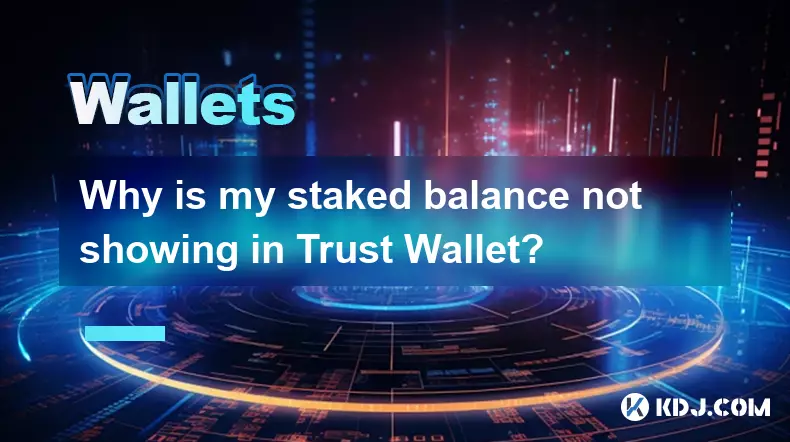
Why is my staked balance not showing in Trust Wallet?
Oct 01,2025 at 12:54am
Understanding Decentralized Exchanges in the Crypto Ecosystem1. Decentralized exchanges (DEXs) operate without a central authority, allowing users to ...
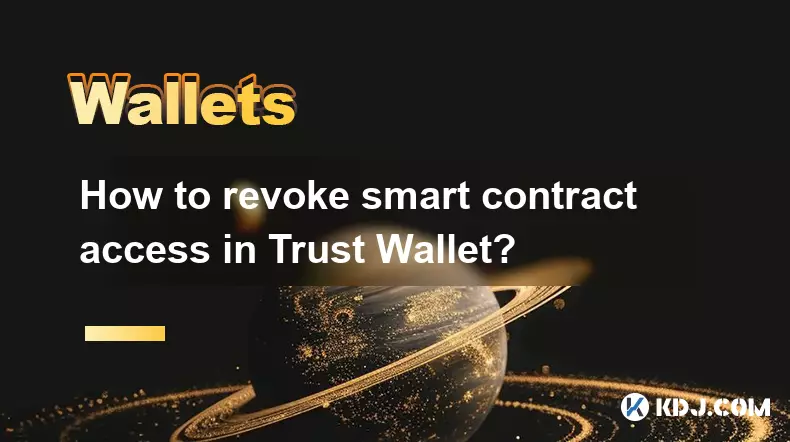
How to revoke smart contract access in Trust Wallet?
Oct 01,2025 at 12:54pm
Understanding Smart Contract Access in Trust Wallet1. Smart contracts are self-executing agreements built on blockchain networks, commonly used in dec...
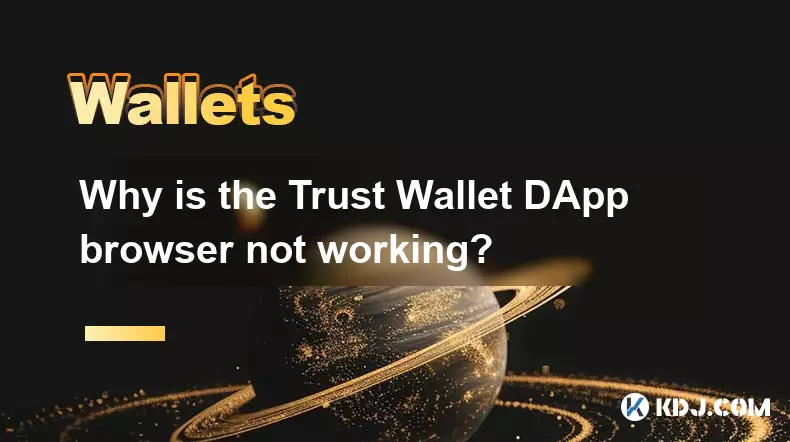
Why is the Trust Wallet DApp browser not working?
Oct 01,2025 at 05:36am
Common Causes of Trust Wallet DApp Browser Issues1. The DApp browser within Trust Wallet may fail to load due to connectivity problems. A weak or unst...
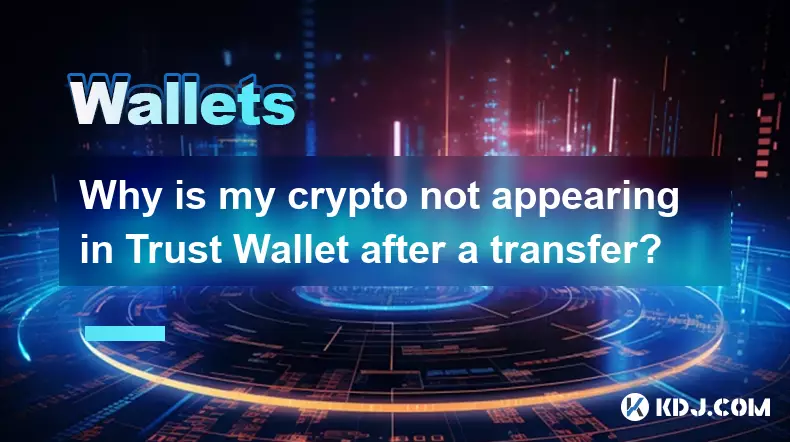
Why is my crypto not appearing in Trust Wallet after a transfer?
Oct 01,2025 at 04:36am
Common Reasons Your Crypto Doesn’t Appear in Trust Wallet1. The transaction is still pending on the blockchain. Blockchain confirmations can take time...
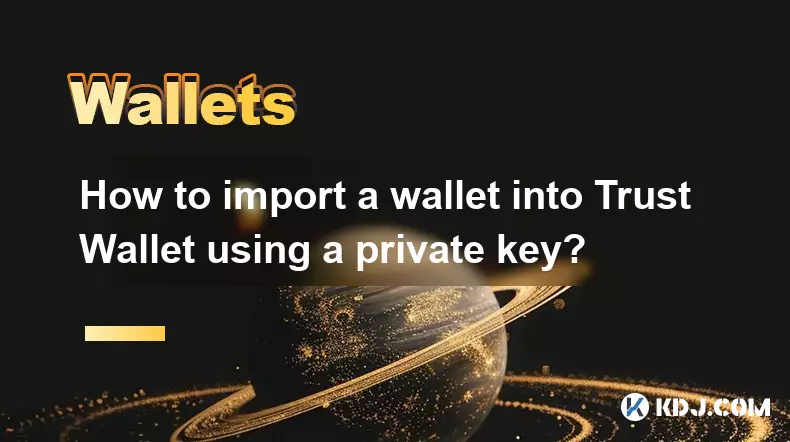
How to import a wallet into Trust Wallet using a private key?
Oct 01,2025 at 09:54am
Understanding Wallet Import via Private Key in Trust Wallet1. Trust Wallet allows users to import existing cryptocurrency wallets using a private key,...

How to get the Trust Wallet browser extension?
Oct 01,2025 at 12:37am
How to Access the Trust Wallet Browser Extension1. Visit the official Trust Wallet website through a secure internet connection. Navigate to the downl...

Why is my staked balance not showing in Trust Wallet?
Oct 01,2025 at 12:54am
Understanding Decentralized Exchanges in the Crypto Ecosystem1. Decentralized exchanges (DEXs) operate without a central authority, allowing users to ...

How to revoke smart contract access in Trust Wallet?
Oct 01,2025 at 12:54pm
Understanding Smart Contract Access in Trust Wallet1. Smart contracts are self-executing agreements built on blockchain networks, commonly used in dec...

Why is the Trust Wallet DApp browser not working?
Oct 01,2025 at 05:36am
Common Causes of Trust Wallet DApp Browser Issues1. The DApp browser within Trust Wallet may fail to load due to connectivity problems. A weak or unst...

Why is my crypto not appearing in Trust Wallet after a transfer?
Oct 01,2025 at 04:36am
Common Reasons Your Crypto Doesn’t Appear in Trust Wallet1. The transaction is still pending on the blockchain. Blockchain confirmations can take time...

How to import a wallet into Trust Wallet using a private key?
Oct 01,2025 at 09:54am
Understanding Wallet Import via Private Key in Trust Wallet1. Trust Wallet allows users to import existing cryptocurrency wallets using a private key,...
See all articles










































































